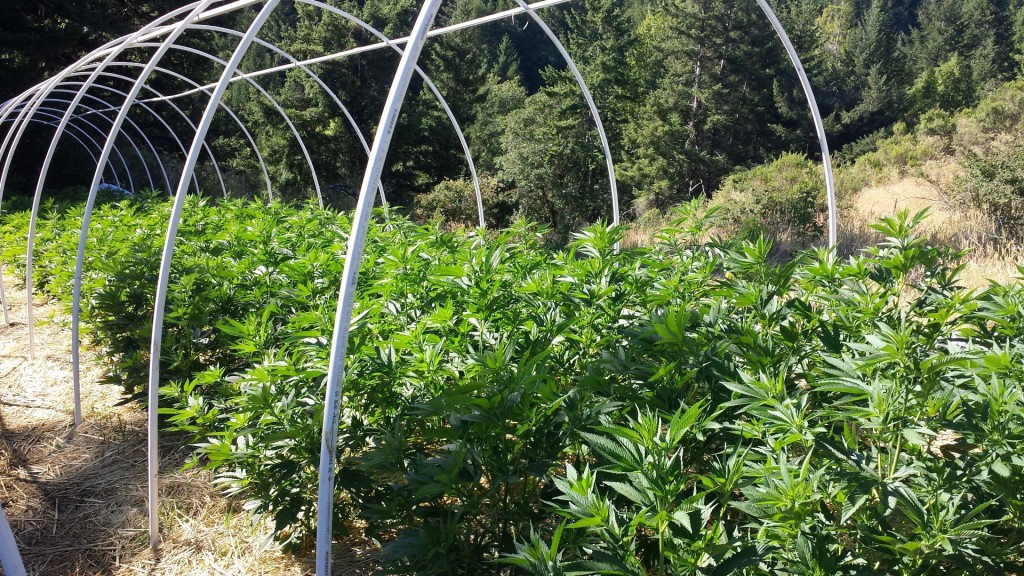The main strategy behind amending with Bokashi is the use of microbiology to digest organic amendments into plant-usable forms. Bokashi is traditionally a grain fermented with a specific combo of microbes, EM-1 (effective micro-organism). The grain is mixed with unsulfured black-strap molasses as a simple food source for the microbes to proliferate. The molasses and EM-1 are mixed together in water and then mixed with the grain until even moisture is achieved. The mixed grain is then closed off from oxygen by storing it in an airtight container or sealed trash bag and left to ferment at room temperature. After two weeks the grain should be properly fermented and should have a strong, but sweet odor. Freshly fermented bokashi tends to remain damp and has a short shelf life. Spreading the Bokashi out in a thin even layer to dry is an effective way to extend its storage capability. The grain is now Bokashi and can be used as a composter or a bio-amendment for organic nutrition. As a composter, Bokashi is able to break down organic material in an anaerobic (without oxygen) process. This allows for easy indoor composting because it takes place in an airtight container, closing in and breaking down odor while closing out unwanted insects and animals. The bokashi itself has its own unique smell reminiscent of beer and wine fermentation because similar microbes are present, most notably yeast and lactic acid bacteria. Composting with bokashi takes approximately two weeks at room temperature for kitchen wastes to be broken down into pickled mush. This fermented compost will break down quickly when added to the soil, attracting worms, fungi, bacteria, protozoa and other beneficial organisms. The result is turning your kitchen waste into an extremely plant-available source of nutrition.
Using Bokashi to bio-activate organic amendments
Once Bokashi has been placed in an environment with water and a food source, it springs to life eating and mineralizing amendments to bio-available forms. Visually, you can see the growth of bacterial filaments that resemble fungal mycelia. These long white hairs or grey fuzz belong to the Actinobacteria group made up mostly of the Streptomyces genus. These are very common microbes in healthy compost and are associated with giving soil its earthy odor. Beyond what you can see with your eyes, many microbes are at work, such as lactic acid bacteria (LAB). LAB's are one of our most important and prolific composters and are commonly used in breaking down smells in waste treatment. These microbes will eat the organic amendments we add upon planting and their wastes will become available to the plant. This is similar to the strategy of using compost tea, which uses beneficial microbes to help in plant health and nutrition. By applying bokashi with amendments upon planting you accelerate their mineralization and availability. After digging each hole before planting you simply add your favorite amendments like bone meal, blood meal, kelp, trace minerals, guanos, fish or whatever works best for your needs. Then by scattering a handful of bokashi in each hole you employ beneficial microbes to go to work, making your organic amendments plant available. After amending, simply plant and water and you will be amazed at the ease of achieving health and vigor from your plants. Top dressing with a bokashi mix can result in a whitish-gray mold on the surface of the soil. This is nothing to be alarmed about, it just means the actinobacteria and other beneficials are doing their job. You can also use bokashi compost instead of buying amendments. This means all your plant nutrition needs can be achieved from your wastes. All you do is take your kitchen wastes (including meat and dairy) and place them in an airtight bucket sprinkling bokashi on each additional layer. The smaller the pieces of waste, the faster the bokashi can process it. Keeping the bucket at room temp the process should take about two weeks. Then you simply dig holes in your garden, add the fermented bokashi compost then cover with soil and plant. The plant will have a powerful source of slow release nutrition. The use of this kind of organic nutrition has shown to have some power to repel pests from and attract beneficials to plants. I have noticed that plants grown this way are far less attractive to pests and, also, are far more resistant. The bokashi attracts worms and other beneficials in the ground who feed on the fermented bokashi compost as it breaks down in the soil. As they eat they leave behind their plant nutritious castings. Bokashi is also a great way to introduce safe beneficial biology to the indoor garden environment. Gardening with bokashi can accelerate the potential of beneficial biology in your soil unlocking organic nutrition in a truly plant available form. Writen By BioVortex
HUMBOLDT SEED ORGANIZATION-QUALITY FIRST





Team h.s.o much love
Thanks this was very helpful. We have indoor gardens & want to add Bokashi to the soil, but feared it might not be the best thing to do. We will give it a try & see what happens.
Some of the only accurate information regarding bokashi with the use of dry amendments everything else seems to be talking more about the long term food composting which takes about two weeks! When using dry amendments how long do these need to be left in anaerobic conditions before fermentation finishes and decomposition begins! Would two weeks of dry amendments in anaerobic conditions be too long?